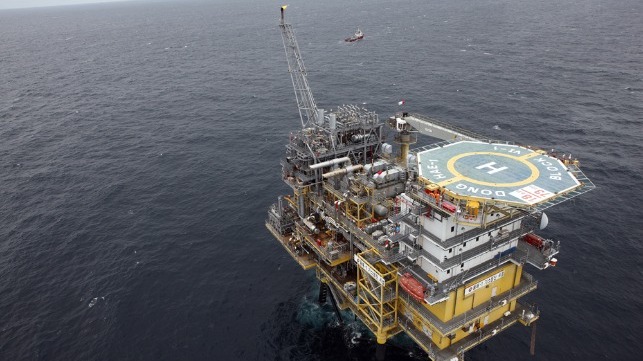Korea to Demonstrate Carbon Capture and Storage in Offshore Gas Field

South Korea announced plans for a demonstration project for the capture, transportation, and storage of carbon dioxide. The project, which involved eight Korean companies including Korea Shipbuilding & Marine Engineering and the Korea National Oil Company along with government-sponsored research, is part of a broader plan to redeploy a decommissioned offshore gas field for the storage while converting to generate offshore wind in the area as part of a hydrogen initiative.
The project centers around the Donghae Gas Field, which is scheduled to end production in 2022. They plan to capture and transport 400,000 tons a year of carbon from industrial users for injection into the depleted wells starting in 2022. Korea has a goal of collecting, utilizing, and storing 10 million tons of carbon dioxide per year by 2030. The plan is that industrial applications will use more than six million tons while the remaining four million tons will be treated through storage.
Korean National Oil is leading the project which will work with SK Energy to capture carbon from industrial applications. SK Innovation will acquire the technology to treat the CO2 while Korea Shipbuilding will participate in the transportation and storage. Korea Petroleum Corporation will utilize its experience in the operation of the Donghae Gas Field for 20 years, to inject the CO2 into the stratum of the decommissioned gas field.
Yang Soo-young, president of Korea Petroleum Corporation, said, “Oil companies are actively engaged in the era of decarbonization around the world. In particular, oil companies with expertise in deep underground strata are playing a leading role in the CCS business. As Korea National Oil Corporation promotes floating offshore wind power and CCS projects using the Donghae Gas Field, which will be terminated in 2022, it can reduce demolition costs, reduce investment costs, and actively participate in the decarbonization policy.”
Korea National Oil believes that the development of a mid-sized CCS integrated demonstration model using the Donghae gas field will play a key role in the process of deriving an optimal implementation model for the successful implementation of CCS projects.
To achieve Korea’s larger goals for the underground storage of carbon dioxide, Korea Petroleum will also be participating in a government research project designed to explore Korea’s continental shelf, including in the East Sea, to identify additional locations for the underground storage of CO2. Deep-sea exploration drilling is planned to find strata suitable for underground storage.
The other portion of the decommissioning of the gas field calls for the development of a 200 MW floating offshore wind project as part of the plan to develop 6GW of floating offshore wind power near Ulsan, Korea.
Another element of the plan that was announced earlier in May when Korea approved the feasibility study for the offshore wind farm includes the construction of a 100-megawatt hydrogen plant. Korea Shipbuilding and Hyundai Heavy Industries will develop the plant to produce blue hydrogen from natural gas with carbon capture technology and green hydrogen from seawater using electricity generated from the floating offshore wind farm. Under the plan, Hyundai will establish a new business unit that will handle the production of hydrogen to be used both in the shipping industry and onshore transportation.
